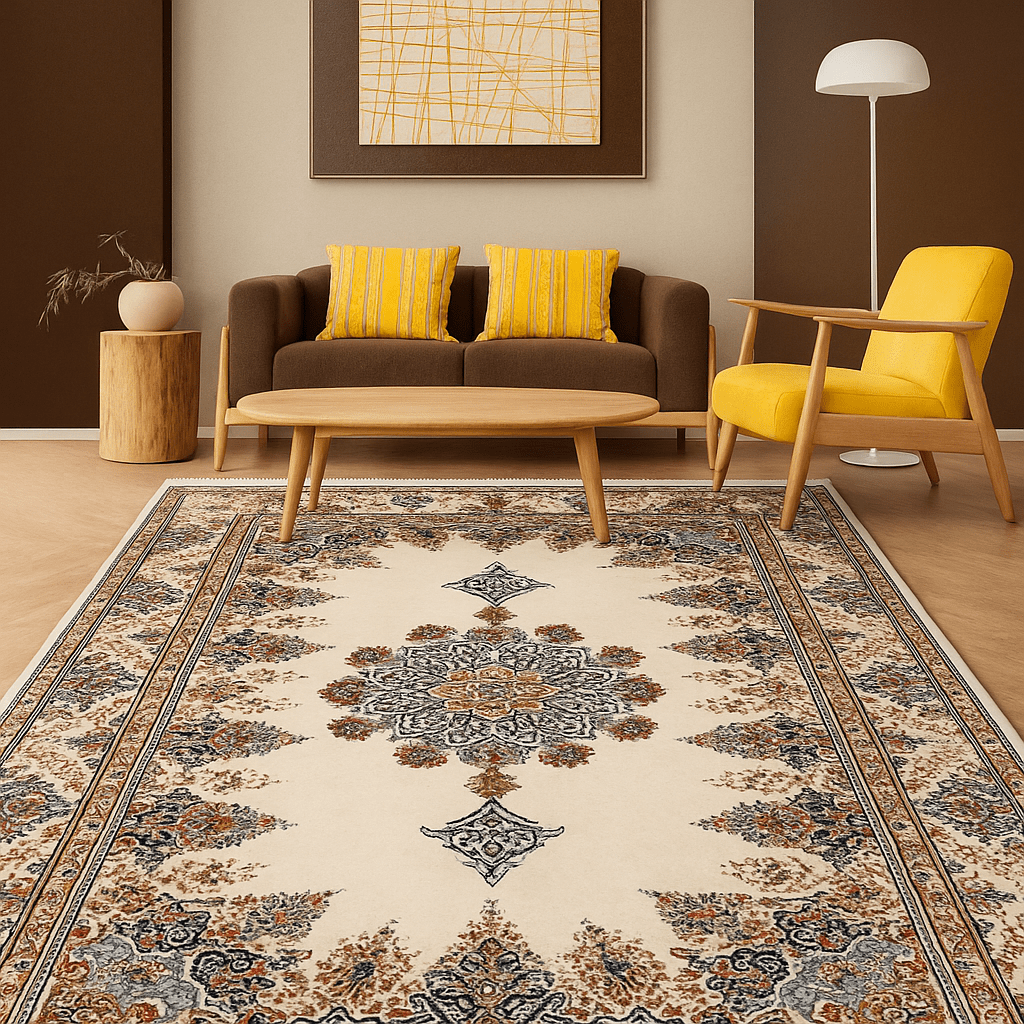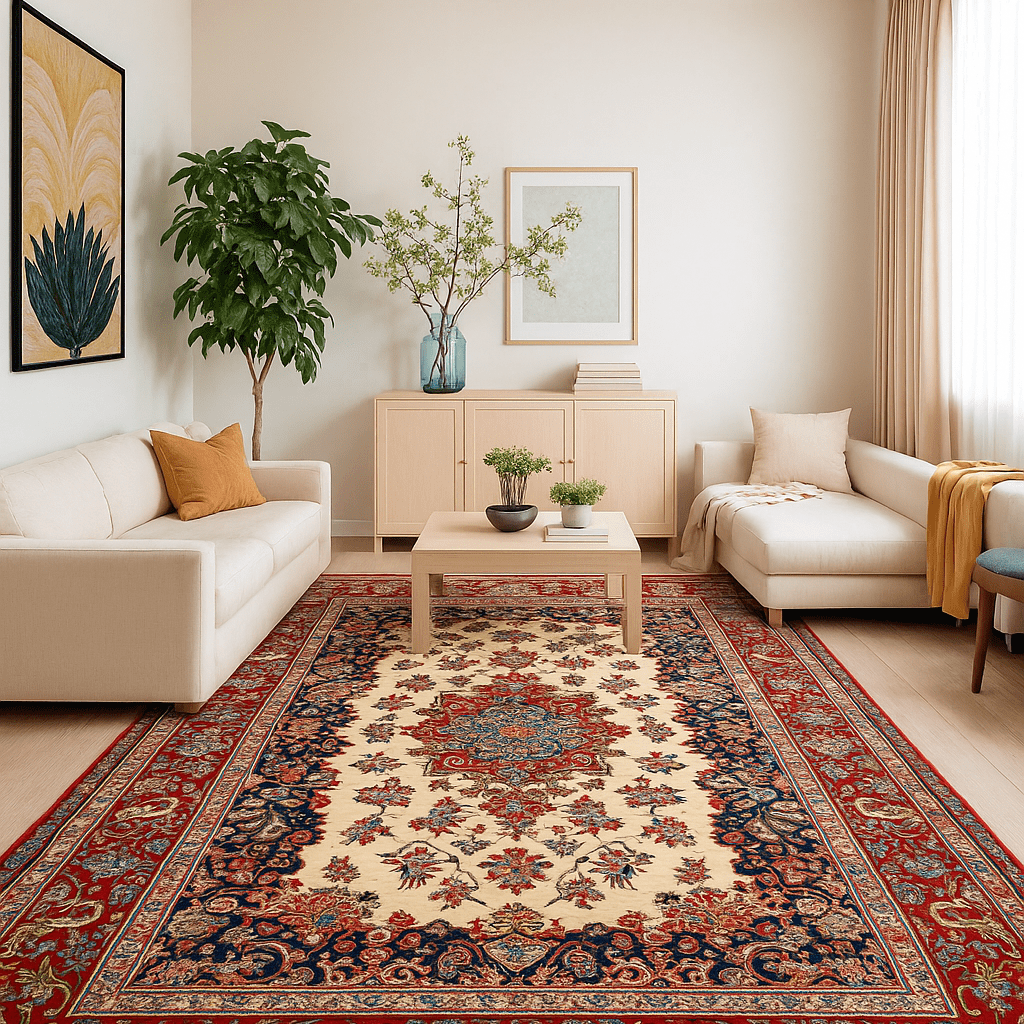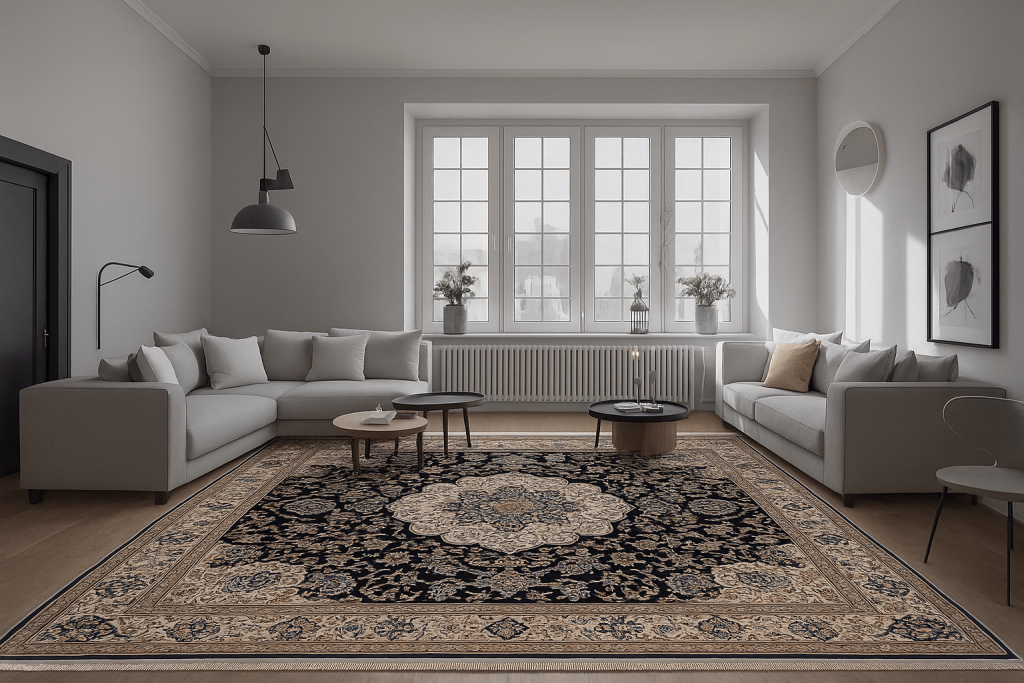In today’s competitive market, despite global rivalry in the carpet industry, Persian carpets remain unmatched in authenticity, elegance, and Eastern artistry. But why does this ancient heritage still hold the title of “the best carpets in the world”? The answer lies in history, culture, craftsmanship, and quality.
A Millennia-Old Art with Unmatched Cultural Heritage
Carpet weaving in Iran dates back over 2,500 years. It is not just a craft but a visual language rooted in mythology, tradition, and nature.
Every knot and motif tells a story from the soul of Persia.
Iconic designs such as the Shah Abbasi flower, medallion, tree of life, and hunting scenes carry deep symbolic meaning.
Each region—Kashan, Tabriz, Kerman, Nain, Sanandaj—has a unique style.
Most carpets are woven by skilled artisans in homes or small workshops—not by industrial laborers.
Persian weavers are adults; child labor is strictly prohibited by Iranian law.


Superior Quality in Material and Weaving
The secret of Persian carpet superiority lies in the raw materials and expert technique.
Natural wool, hand-spun yarn, pure silk, and plant-based dyes ensure durability and softness.
Knot density can reach up to 1,000 knots per square inch in fine pieces (e.g. Tabriz).
Carefully structured warp and weft grant the rug exceptional strength.
Unique and Mesmerizing Designs
Persian carpets blend Eastern aesthetics with Islamic geometry and artistic creativity.
No two Persian rugs are ever truly the same—each is a unique work of art.
Color harmony, symmetry, and visual balance are masterfully executed.
Patterns reflect the cultural identity of their origin.
Persian rugs are beautiful from both afar and up close—like a painting.
A Lasting Investment
Handmade Persian carpets are not just decorative items—they’re long-term investments.
Antique Persian carpets can sell for millions at international auctions.
Like a Rolex or a Rolls-Royce, a Persian carpet is more than a product—it’s a legacy.
They last for generations and can be easily repaired.
Their value appreciates over time, unlike mass-produced rugs.

Global Recognition and Constant Demand
Despite competition from China, India, Pakistan, and Afghanistan, Persian carpets dominate the premium segment.
The term “Persian Carpet” is synonymous with excellence.
Persian rugs are exhibited in global museums, galleries, and palaces.
Both tribal and urban styles coexist—this diversity is unique to Iran.
Europe, the USA, Japan, and Gulf countries remain major buyers.
The Soul of Persian Carpets
Some Persian rugs are naturally coarse in weave—and that’s their identity.
Forcing uniformity on tribal rugs takes away their soul.
Turning wool-based carpets into silk copies severs their link with tradition.
Irregularities, asymmetry, and hand-dyed wool streaks are signs of authenticity.
Each rug has its rightful place—sometimes a simple Qashqai kilim brings more harmony than a grand Isfahan masterpiece.
A rug’s imperfections often make it more real and lovable.
Conclusion
Persian carpets embody art, heritage, skill, and emotion. In a world of mass production, they shine as symbols of human identity and timeless beauty.
We may not last forever—but our Persian carpets will. They are alive.
🛍️ Rugeast Suggestion
At Rugeast, we proudly present a curated collection of the most authentic and artistic Persian carpets—from Tabriz to Qashqai.
Shop with knowledge, choose with awareness.
Explore our gallery today and bring home a true piece of Persian heritage.
FAQ
Persian carpets stand out due to their hand-knotted craftsmanship, natural materials, authentic designs, and a weaving tradition over 2,500 years old. Each one is a unique work of art.
Yes. All Persian carpets offered at Rugeast are 100% handmade by skilled artisans in Iran.
Absolutely. Authentic Persian rugs often increase in value over time and are passed down as cherished family heirlooms.